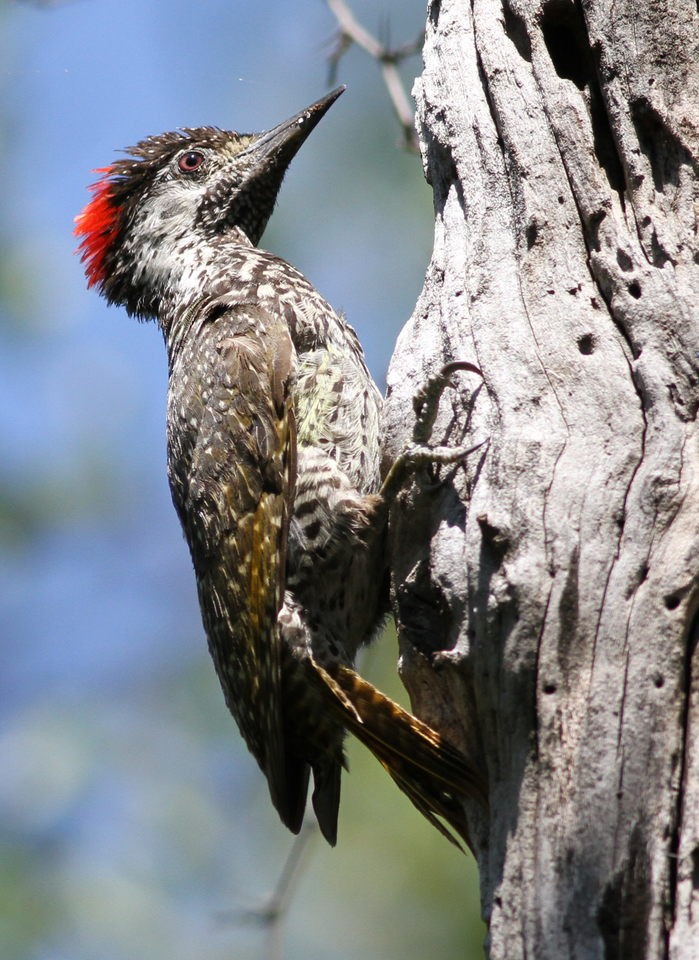Golden-tailed Woodpecker
A species of African Green Woodpeckers Scientific name : Campethera abingoni Genus : African Green Woodpeckers
Golden-tailed Woodpecker, A species of African Green Woodpeckers
Botanical name: Campethera abingoni
Genus: African Green Woodpeckers
Content
Description General Info
Description
The combination of barred, greenish upper part plumage, and streaked underparts is distinctive. Their golden-olive tails do not differ markedly from those of several related or sympatric woodpecker species, but their single, strident call-note is characteristic. It measures 20 to 21 cm from bill tip to tail tip. The southern races weigh about 70 g, but the northern race C. a. chrysura, only about 55 g. Males are on average larger and heavier than females. The sexes are best distinguished by their head markings, as the red and brown fore-crowns of males differ unmistakably from those of females that are black and spotted white. The malar stripes of males are red and that of females mottled black and white. The iris is usually dark red but variable, the mandibles slate grey, and the legs and feet greenish-olive. Juveniles are heavily streaked on the throat and breast and barred on the belly. They and have mottled malar stripes, and a brown to brownish-grey iris. 
Size
23 cm
Nest Placement
Cavity
Feeding Habits
Golden-tailed Woodpecker predominantly feeds on arboreal ants and termites, supplemented by millipedes, wood-boring larvae, and leaf-feeding moth larvae. Unlike its kin, golden-tailed Woodpecker frequently hammers on dead or diseased wood to forage, besides probing and gleaning, specializing in thicker branches compared to similar species.
Habitat
The golden-tailed Woodpecker occupies diverse woodland habitats, ranging from coastal and riparian forests to miombo and mopane woodlands, often near rivers. It is arboreal, foraging predominantly in the lower to middle tree strata and keeping mostly to the edge in montane and dense forest. The golden-tailed Woodpecker establishes territories up to 15 ha and is found in areas with dense trees, including parks and gardens. It occurs from sea level to 2200 m elevation in East Africa, adapting to various regional woodland ecosystems while maintaining ecological separation from similar species.
Dite type
Insectivorous
General Info
Feeding Habits
Bird food type
Species Status
Not globally threatened.
